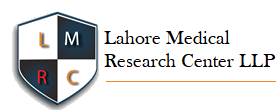Protective Potential of Ashwagandha, Against Pyrifluquinazon Induced Hepato-And Nephrotoxicity in Albino Mice
Potential of Ashwagandha, Against Pyrifluquinazon
DOI:
https://doi.org/10.54393/mjz.v4i02.82Keywords:
Pyrifluquinazon, Ashwagandha, Toxicity, Albino MiceAbstract
Globally, due to rise in dependence on the agricultural sector for food supply, the use of insecticides i.e., “Chemicals used to kill insects”, has been increasing day by day. One of these is Pyrifluquinazon. The emerging concern is that after field spray, this insecticide has the tendency to be incorporated into surface water and become a part of the food chain and so becomes toxic for both aquatic and terrestrial organisms. Objective: To investigate the protective potential of Ashwagandha against damaging effect of Pyrifluquinazon (PQZ) on liver and kidney of mature and healthy male albino mice. Methods: Albino mice were divided into four groups, each group contained five mice. First group was control, supplied with water while, three were treated groups (Dose, Dose + Antidote and Antidote group respectively) to check protective potential of Ashwagandha against PQZ induced hepato and nephrotoxicity in mice. The dose group was supplied with PQZ while Dose + Antidote group with PQZ and Ashwagandha as an antidote while the Antidote group was supplied with Ashwagandha. This was accomplished for 20 days trial. Blood sampling and dissection was done at 20th day. Blood sample were taken using intra cardiac sampling method for biochemistry while liver and kidney were separated from each group for histopathological studies. Results: The liver function test and kidney function were normal and indicated restoration of their normal function. Histopathological findings also revealed regeneration in damaged areas of liver and kidney tissues. Conclusions: The Findings of this study clearly revealed the protective potential of Ashwagandha against PQZ induced hepato and nephrotoxicity.
References
Ramos DL, Cunha WL, Evangelista J, Lira LA, Rocha MV, Gomes PA et al. Ecosystem services provided by insects in Brazil: What do we really know?. Neotropical Entomology. 2020 Dec; 49: 783-94. doi: 10.1007/s13744-020-00781-y.
Resh VH and Cardé RT, editors. Encyclopedia of insects. Academic Press; 2009.
McElwee P, Fernández‐Llamazares Á, Aumeeruddy‐Thomas Y, Babai D, Bates P, Galvin K et al. Working with Indigenous and local knowledge (ILK) in large‐scale ecological assessments: Reviewing the experience of the IPBES Global Assessment. Journal of Applied Ecology. 2020 Sep; 57(9): 1666-76. doi: 10.1111/1365-2664.13705.
Stern VM. Economic thresholds. Annual Review of Entomology. 1973 Jan; 18(1): 259-80. doi: 10.1146/annurev.en.18.010173.001355.
Singh NN, Das VK, Srivastava AK. Insecticides and ionic regulation in teleosts: a review. Zoologica Poloniae. 2002; 47(3/4): 49-64.
Maienfisch P. Selective feeding blockers: pymetrozine, flonicamid, and pyrifluquinazon. Modern Crop Protection Compounds. 2019 Mar; 3: 1501-26. doi: 10.1002/9783527699261.ch34.
Ding L, Han M, Wang X, Guo Y. Ochratoxin A: Overview of Prevention, Removal, and Detoxification Methods. Toxins. 2023 Sep; 15(9): 565. doi: 10.3390/toxins15090565.
Brooks J, Cervantes-Godoy D, Jonasson E. Strategies for smallholders in developing countries: Commercialisation, Diversification and Exit. 2009.
Okokon JE, Okokon PJ, Dar Farooq A, Choudhary MI. Anti-inflammatory and antinociceptive activities of Homalium letestui. Pharmaceutical Biology. 2013 Nov; 51(11): 1459-66. doi: 10.3109/13880209.2013.799707.
Charlton D, Rutledge Z, Taylor JE. Evolving agricultural labor markets. Handbook of Agricultural Economics. Elsevier. 2021 Jan; 5: 4075-133. doi: 10.1016/bs.hesagr.2021.10.003.
Memon RA and Lohana K. Covid-19 outbreak: challenges and opportunities towards agriculture sector. International Journal of Agricultural Extension. 2021 Sep; 9(3): 409-16. doi: 10.33687/ijae.009.03.3622.
Ram R and Schultz TW. Life span, health, savings, and productivity. Economic Development and Cultural Change. 1979 Apr; 27(3): 399-421. doi: 10.1086/451107.
Wielenberg EJ. The Absurdity of life in a Christian Universe as a reason to prefer that god not exist. InDoes God Matter? Routledge; 2017 Dec: 147-163. doi: 10.4324/9781315210995-7.
Suvarna SK, Layton C, Bancroft JD. The hematoxylins and eosin. Bancroft’s Theory and Practice of Histological Techniques. E-Book 8th Edition. Nottingham, UK: Elsevier; 2018. 173-186.
Cervantes-Gody D and Dewbre J. Economic importance of agriculture for poverty reduction. OECDiLibrary. 2010.
Mehreen R, Niaz F, Rehman AU, Shah SJ, Fayaz M, Khan F. To Evaluate the Level of Serum Cholesterol, Uric Acid, Urea, Creatinine and Urine Albumin in Diabetic Patients from Peshawar. Pakistan Journal of Medical & Health Sciences. 2022 Nov; 16(09): 630. doi: 10.53350/pjmhs22169630.
Li J, Stein TD, Johnson JA. Genetic dissection of systemic autoimmune disease in Nrf2-deficient mice. Physiological Genomics. 2004 Aug; 18(3): 261-72. doi: 10.1152/physiolgenomics.00209.2003.
Vedi M, Rasool M, Sabina EP. Protective effect of administration of Withania somifera against bromobenzene induced nephrotoxicity and mitochondrial oxidative stress in rats. Renal failure. 2014 Aug; 36(7): 1095-103. doi: 10.3109/0886022X.2014.918812.
Tavafi M and Ahmadvand H. Effect of rosmarinic acid on inhibition of gentamicin induced nephrotoxicity in rats. Tissue and Cell. 2011 Dec; 43(6): 392-7. doi: 10.1016/j.tice.2011.09.001.
Amarasiri SS, Attanayake AP, Jayatilaka KA, Mudduwa LK. South Asian medicinal plants and chronic kidney disease. Traditional Medicine Research. 2020; 5(5): 389. doi: 10.53388/TMR20200603189.
Downloads
Published
How to Cite
Issue
Section
License
Copyright (c) 2023 MARKHOR (The Journal of Zoology)

This work is licensed under a Creative Commons Attribution 4.0 International License.
This is an open-access journal and all the published articles / items are distributed under the terms of the Creative Commons Attribution License, which permits unrestricted use, distribution, and reproduction in any medium, provided the original author and source are credited. For comments editor@markhorjournal.com











